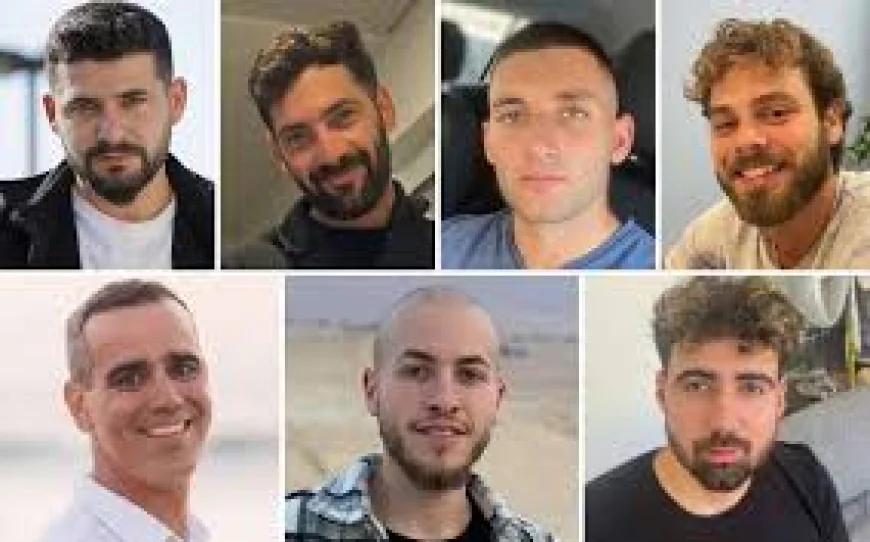Israel Confirms First Hostage Release Under Gaza Ceasefire as Nation Celebrates Historic Truce
Israel has confirmed that Hamas has released the first batch of hostages under a U.S.-brokered ceasefire and prisoner exchange agreement. The move marks the most significant breakthrough since the start of the Gaza war, raising hopes for peace but also uncertainty about the next phases of the deal.

Israel Confirms First Batch of Hostages Freed in Hamas Ceasefire Deal
After days of tense negotiations and cautious optimism, the long-discussed Israel–Hamas ceasefire has finally begun to yield results. Reports from both sides confirm that the first phase of the prisoner exchange is underway, signaling a potential turning point in the year-long Gaza conflict.
A Turning Point in the Gaza Conflict
In a long-anticipated breakthrough, Israel has confirmed the release of the first group of hostages held by Hamas. The move, part of a U.S.-brokered ceasefire and prisoner exchange deal with mediation from Egypt and Qatar, has been welcomed as a rare moment of hope amid months of unrelenting conflict.
According to Israeli officials, seven hostages identified as: Matan Angrest, Gali Berman, Ziv Berman, Alon Ohel, Eitan Mor, Omri Miran, and Guy Gilboa Dalal, were handed over to the International Committee of the Red Cross (ICRC) and escorted safely into Israeli territory. The hostages are reported to be in stable condition and are currently receiving medical evaluation and support.
Inside the Ceasefire and Exchange Agreement
The release forms the first phase of a broader ceasefire deal that includes several key provisions:
-
Hamas is to release all 20 living Israeli captives, along with the remains of deceased hostages.
-
In return, Israel will release nearly 2,000 Palestinian prisoners, including women and minors.
-
The agreement also establishes a temporary cessation of hostilities to allow humanitarian aid and medical supplies to enter Gaza.
Israeli military sources have named the ongoing recovery mission “Operation Shavim Legvulam” meaning Returning to their Border symbolizing the safe return of abducted citizens after a year of captivity.
Emotional Scenes Across Israel and Gaza
Across Israel, the confirmation of the release brought tears, relief, and celebration. In Tel Aviv’s Hostages Square, hundreds gathered to watch live broadcasts, waving flags and chanting as news of each release broke. Families of freed hostages expressed deep gratitude but reminded the nation that the ordeal isn’t over until all captives are safely home.
Meanwhile, in Gaza and the West Bank, large crowds gathered to welcome the first group of Palestinian detainees expected to be released under the same agreement. For many Palestinians, the exchange represents a symbolic victory, a rare moment of leverage in a decades-long conflict defined by asymmetry and loss.
Diplomatic and Global Reactions
World leaders and diplomats have cautiously welcomed the move. The United States, under President Donald Trump, played a pivotal role in brokering the deal with Trump currently in the region to oversee the first phase of implementation. Egypt and Qatar were instrumental mediators, facilitating communication between the warring sides.
European governments and the United Nations have praised the release as a “critical first step” toward ending the hostilities, though they warn that maintaining the ceasefire will be the real test of political will on both sides.
What Lies Ahead
While the release marks a significant milestone, uncertainties linger. Israel expects the remaining 13 hostages to be freed in the coming days if Hamas adheres to the agreement’s terms. However, analysts caution that the ceasefire’s success hinges on mutual compliance and restraint.
Questions also remain about Gaza’s political and humanitarian future, from governance and reconstruction to aid distribution and long-term security arrangements. For now, though, the world is watching a rare window of hope open in one of the world’s most intractable conflicts.
Source:
TheGuardian/APNews


